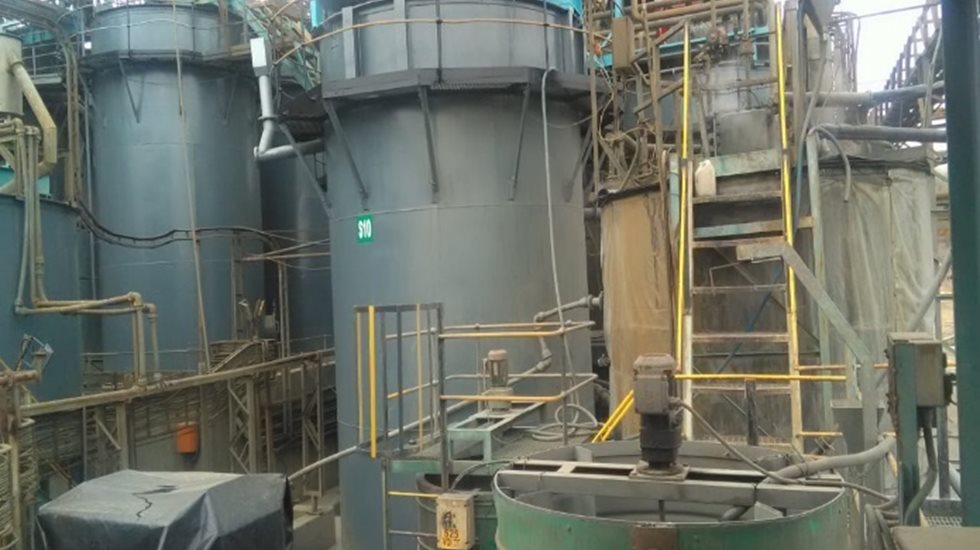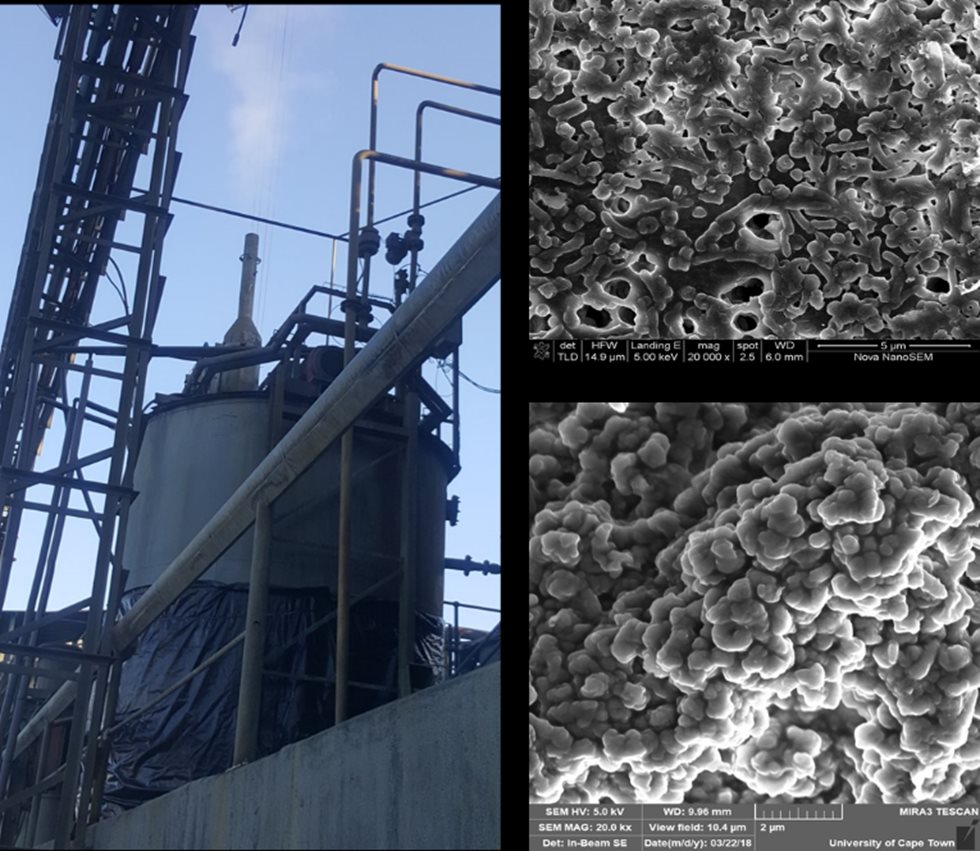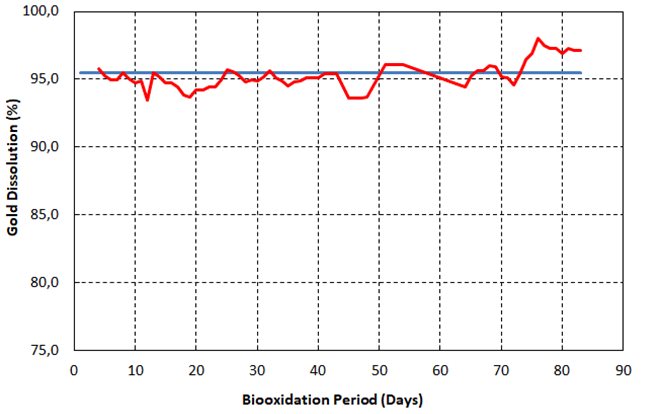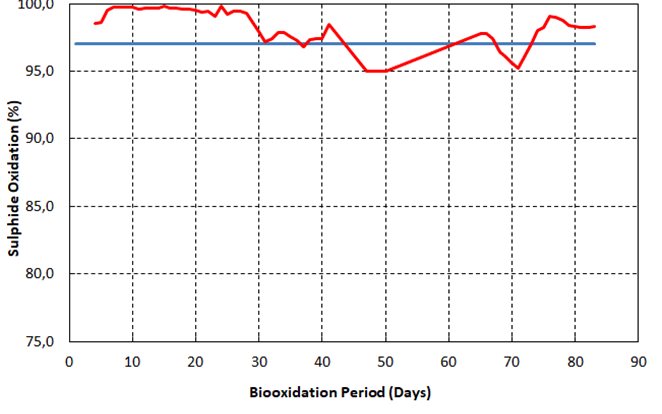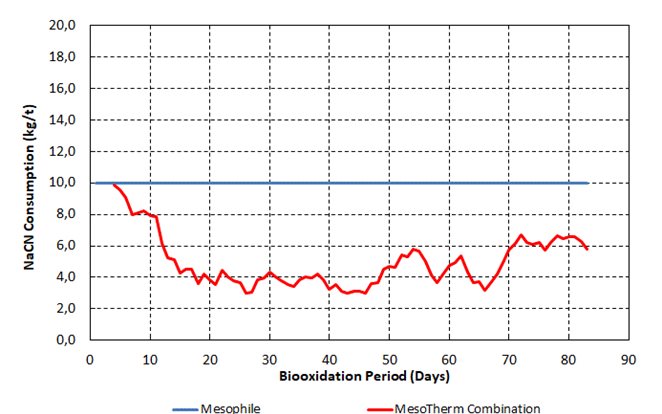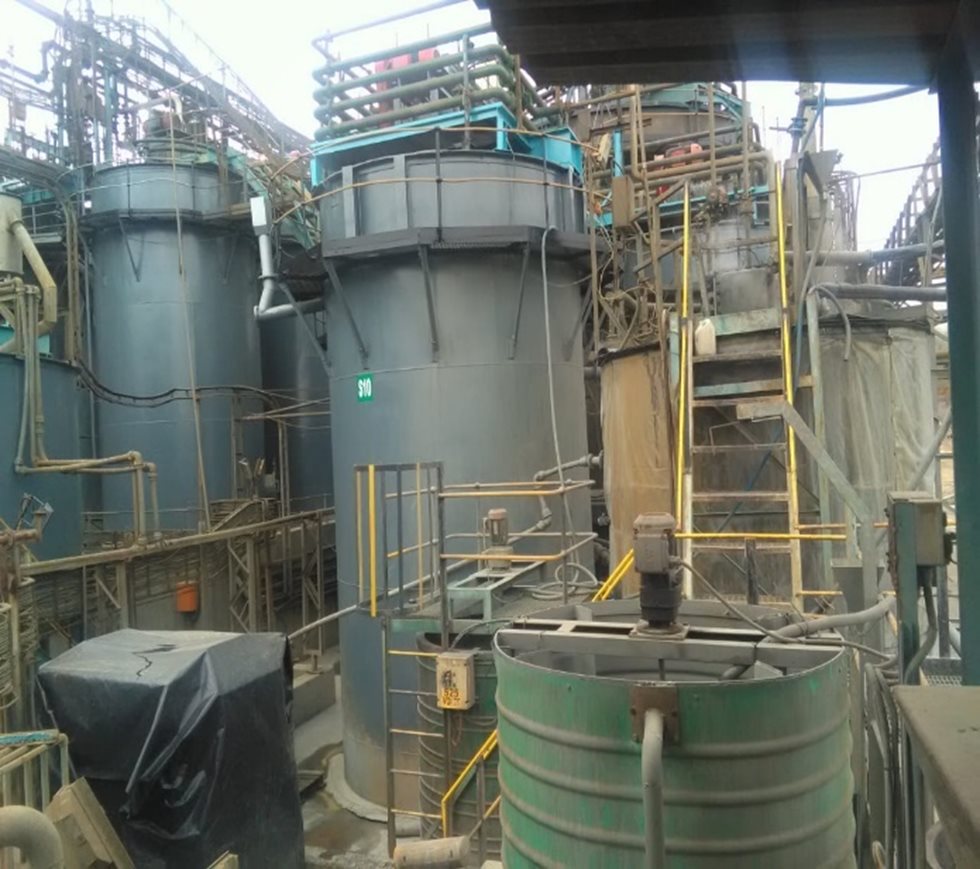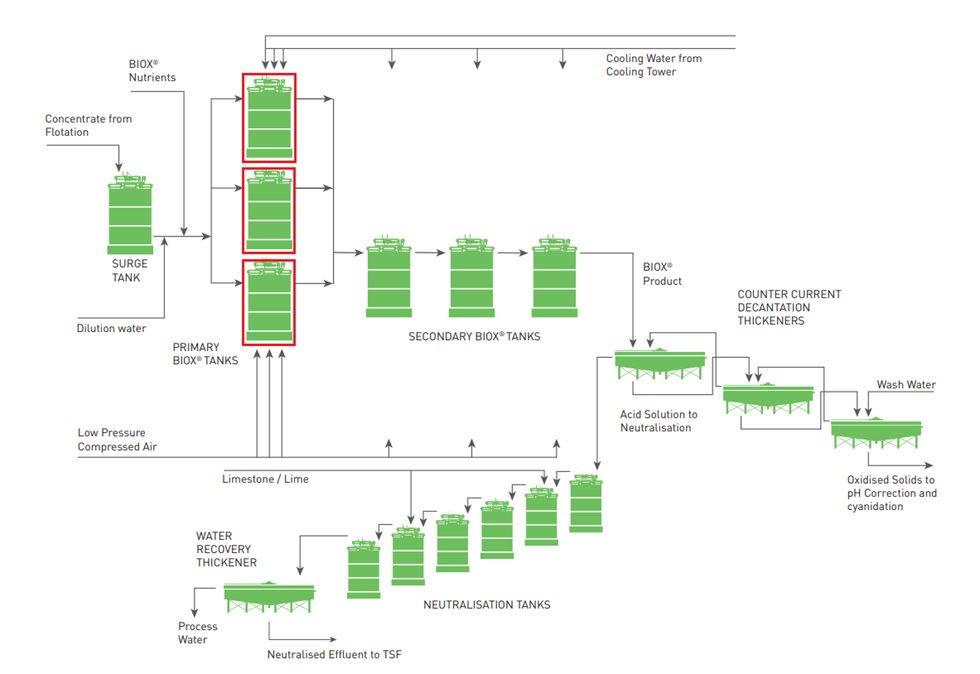The trials began with pilot-plant primary vessel sizes of 240 liters in 2006 and progressed to a primary vessel size of 1,000 liters in the 2015 and 2016 campaigns. The premise of the two-stage bio-oxidation process was that the final thermophile treatment stage would yield a more “sterile” residue by way of limiting the residual reactive polysulfide levels and hence limit the reaction of these active sulfur species with cyanide. A continuous demonstration and scale-up trial in the 21 m3 reactor at Fairview was therefore the next logical step in terms of investigating the process operational parameters to further develop the MesoTherm technology as a process that can be effectively integrated in BIOX plants. The objectives of this large-scale trial were therefore to:
- Demonstrate the culture robustness in the 21 m3 reactor relying on blends of partially oxidized material and fresh concentrate slurry;
- Evaluate the suitability of delivering the oxygen mass transfer requirements only using air at thermophilic temperatures (~65°C) when feeding a blend of concentrate and partially oxidized slurry;
- Confirm that the low cyanide consumptions determined in the 1 m3 continuous trial are obtainable and reproducible from the thermophile residue.
